The Surya Siddhanta (Download The Surya Siddhanta here)
At the conclusion of Satya Yuga, the Surya Siddhanta was conveyed to Asura Maya Danava, the esteemed divine architect of the Asuras. This holds significant relevance, as the Surya Siddhanta delineates the spatial blueprint of the cosmos. Given Maya Danava’s inherent architectural prowess, his proficiency with a square and compass would be undeniable. He was bestowed with the profound understanding of the universe as a reward for his devotion to Surya, the Sun deity. The Surya Siddhanta was spoken by Aham to Maya Danava.
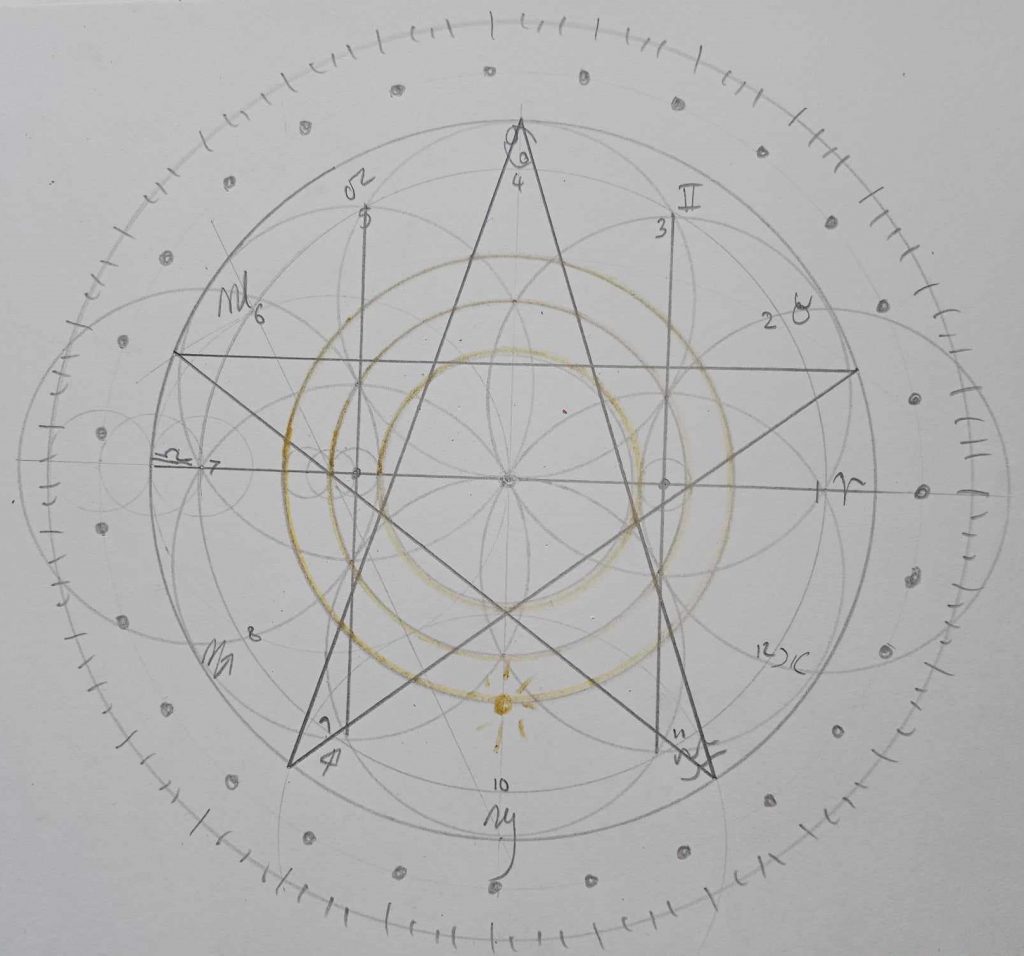
Time and the Sat-kona
Through the Kala wheel, we discern the genesis of the concept of time. The divisions—60 seconds, 60 minutes, and 12 hours each for day and night, totaling 24 hours—originate from this ancient construct. The term “hour” derives from the Sanskrit word “hora,” signifying the 24 hora’s within the day/night cycle. These divisions find their roots in the Sat-kona. The Sat-kona directly correlate to the Srimad Bhagavatam 5th Canto descriptions of the movements of the Sun.
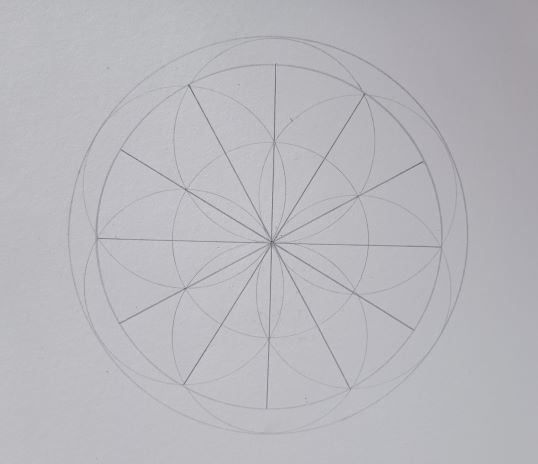
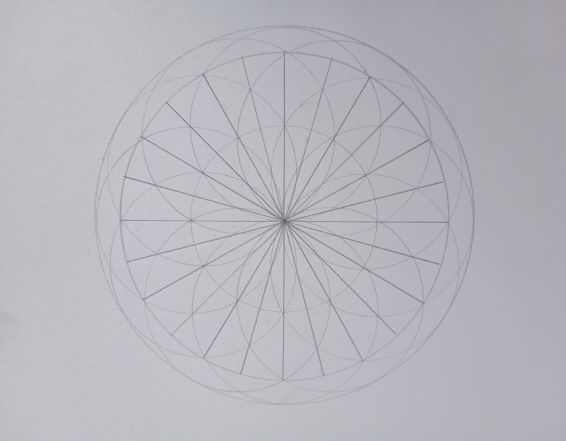
With further division using the cosmic serpent we can show the true movements of the Sun as explained in the 5th canto. The Uttarayana (Northern path/tropic of Cancer/Karka) and the Dakshinayana/tropic of Capricorn/Makar. The zodiac is divided into twelve signs all having 30 degrees of space in the sky, each sign is made up of two hora’s.
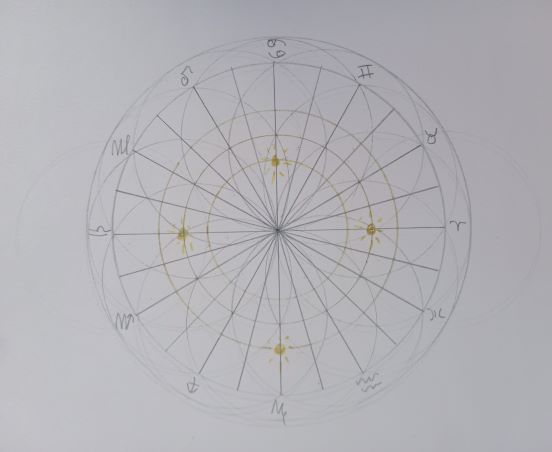
The Uttara and Dakshinayana represents the day and night of the Deva’s and the Asura’s, the Deva’s are awake when the Sun is in Aries (3/22 vernal equinox) and go to sleep when the Sun is in Libra (9/22 Autumnal equinox). The Asura’s wake up on the Autumnal equinox and go to sleep on the Vernal equinox. The Uttarayana starts on the 25th of December, three days after the summer solstice (12/22), the Dakshinayana starts June (6/22). The movements of the Sun can be seen on these dates as many Vedic temples are still aligned with the movements of the Sun to this day.
Srimad Bhagavatam 5.21.3
In the midst of that region of outer space [antarikṣa] is the most opulent sun, the king of all the planets that emanate heat, such as the moon. By the influence of its radiation, the sun heats the universe and maintains its proper order. It also gives light to help all living entities see. While passing toward the north, toward the south or through the equator, in accordance with the order of the Supreme Personality of Godhead, it is said to move slowly, swiftly or moderately. According to its movements in rising above, going beneath or passing through the equator — and correspondingly coming in touch with various signs of the zodiac, headed by Makara [Capricorn] — days and nights are short, long or equal to one another.
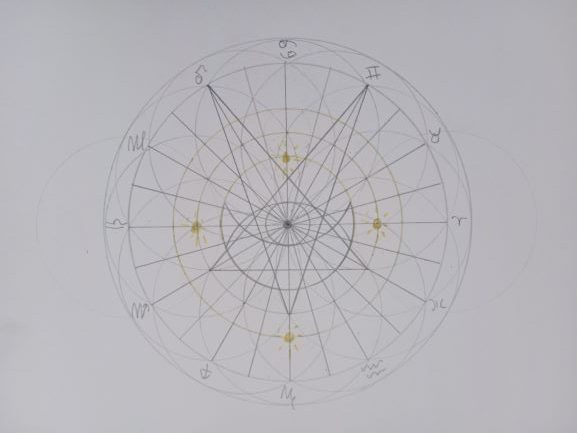
As stated above the Makara is the Head of the zodiac, the Makar (Crocodile Fish) are the guardians of “Space” they also represents the Square and Compass, Maya Danava, the Divine Architect.
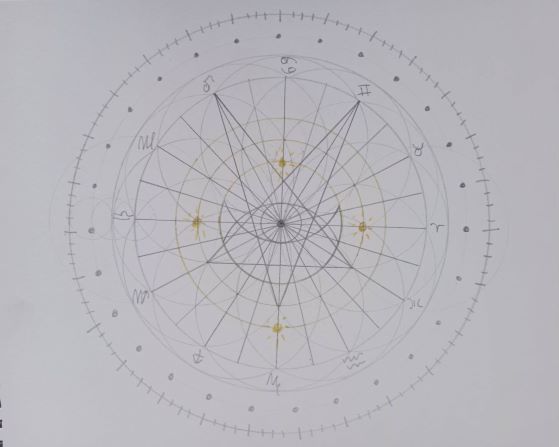
Over a year the Sun moves through the 12 Zodiac signs and has one Northern/Southern path (Uttara/Dakshina). The Moon is moving through the 27 nakshatra, the 27 nakshatra are Chandra’s wives, the daughters of Daksha. The Moon spends a day in each nakshatra and 2.5 days in each zodiac sign.
The Navagraha
In the Vedic system there are nine planets/graha, the seven light planets are the Sun, Moon, Venus, Mercury, Mars, Jupiter and Saturn. The two shadow planets Rahu and Ketu, Rahu and Ketu are the Serpents Head and tail, which were divided at the beginning of the creation by Mohini Murti’s Sudarshana chakra. Rahu and Ketu move anti clockwise in the sky, they are responsible for the lunar and Solar eclipses. The seven light planets are the seven rays of light and also the seven horses that pull Surya’s chariot.
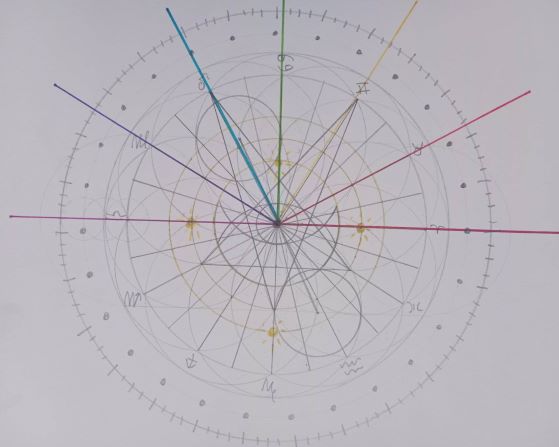
The Surya Siddhanata goes into great detail with regards to measuring the rise and fall of the graha and the Kala chakra, all being pivoted at the pole star. Note that in the Surya Siddhanta the graha and kala wheel orbits a central pivot (Druvaloka) above our earth (The North pole).
Our Earth island
Surya Siddhanta 1.59
“The earth’s diameter (bhukarëa) is 1600 (2 X 800) yojanas.* The square root of 10 times the square of earth’s diameter is earth’s circumference.”
To calculate our earth circumference we can use 2πr. the diameter being 800 yojana (6400 miles) In the Surya Siddhanata, Bhakti Siddhanta Maharaja says a yojana is approx. 8 miles, Srila Prabhupada also used 8 miles for the yojana in the Srimad Bhagavatam 5th canto measurements.
Using these numbers our earths circumference is calculated to be 40,212 miles. Srila Bhakti Siddhanta calculates it to be 5070 Yojanans, 5070×8= 40,560 miles.
According to the Srimad Bhagavatam our earth is one of nine islands of the Southern tip of Jambudvipa surrounded by salt water ocean.
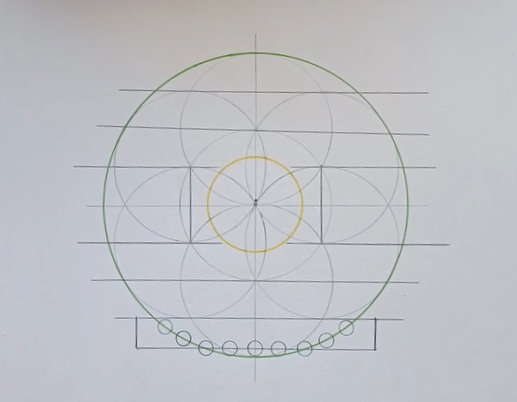
Because the ether conforms to the Sat-kona the Sun and Kala wheel are able to be present locally, appearing as a localised Kala wheel. In essence the Kala chakra is projected through the ether appearing above our circular island within the salt water ocean. The azimuthal projection map of earth is most compatible can be understood through the Sat-kona.

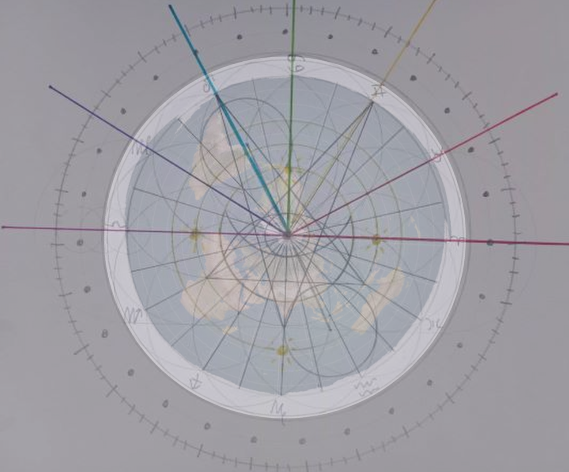
By overlaying the Sat-kona over our circular earth, we can see clearly how the kala wheel is coming down through the ether, keeping the 5th canto movements of the Sun intact. The Sat-kona is creating an ethereal scale presenting the Kala wheel according to our earth island proportions. The Uttara and Dakshinayana can be clearly understood and it is simply the inner and outer movements of the Sun that is creating the change in seasons over the year.
The Celestial Sphere
The Surya Siddhanta explains very complex methods which can be used to measure the stars and planets with extreme precision and though it does use a method of measuring the celestials as a sphere, the earth its self is not a sphere. The celestial sphere aspect is due to the fact, that from our perspective the stars and planets appear to rise and fall. This rise and fall is what creates the day and night and is known as the elliptic and the ecliptic, no stars or planets go below the earth. The kala wheel is rotating above,as stated in both the Srimad Bhagavatam and the Surya Siddhanta, the elliptic and ecliptic is simply an illusion we see from our tiny perspective. By understanding the Surya Siddhanta in the context of the 5th canto we are able to keep all shastra intact.
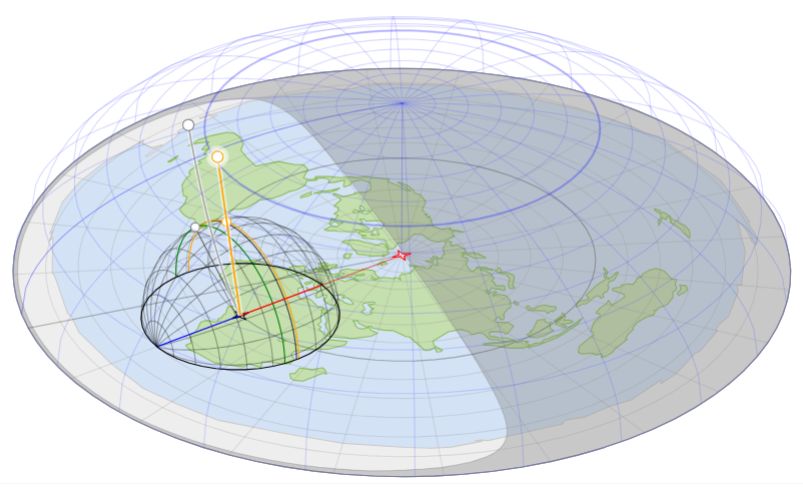
Mahabharata
(Jambhu-khanda-parva of. Bhishma Parva): “This Bharata–khanda (earth) is called Sudarshana-dwipa, since it looks beautiful to the eyes of the onlookers. Being circular it looks like the disk of the Lord and it is attached to the cycle of time in the form of a disk presided over by Bhagavan Sudarsana.
